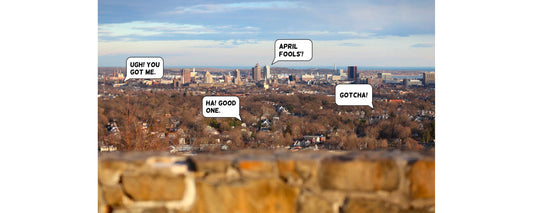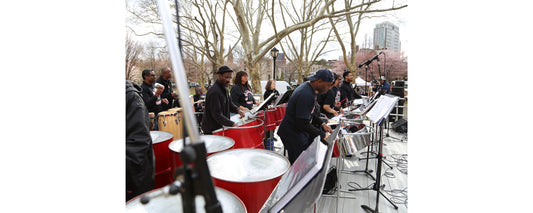There’s a certain level of risk to being a state capital. If, despite your inherent advantages, another state city surpasses you in measures like population, economy or culture, it can lead to perpetual snubbing from the general public.
When I say “California,” you probably think of Los Angeles or San Francisco. Maybe even San Diego. But probably not poor Sacramento. Likewise, New York invokes New York City, not Albany. Illinois conjures Chicago, not Springfield. Florida begets Miami, not Tallahassee, and Louisiana reminds of New Orleans, not Baton Rouge. Pennsylvania’s for Philadelphia or Pittsburgh, not Harrisburg.
For the better part of two centuries, New Haven was at risk of a similar fate. From 1701 to 1875, Connecticut’s modern-day cultural capital was a bonafide capital of Connecticut. It hosted the state’s General Assembly every other year, trading honors with co-capital Hartford. If things had stayed that way, or if New Haven had emerged as the state government’s sole political center, the city would probably look and feel radically different now.
sponsored by

It would start with the New Haven Green, which, beginning in 1717, was home to a succession of state houses. The first one, made primarily of wood, stood along College Street near Elm, sharing the real estate with the city’s courts. Next to that was the city jail, with stocks and a whipping post out front.
In 1763, a new, brick state house was built along present-day Temple Street, just north of where Trinity Church now stands. According to The New Haven State House, written by Henry Peck and published in 1889, the second floor held chambers for the upper and lower houses of the assembly. Meanwhile, “a part of the first floor was used as a dining and ball room, and on the same floor were the court and jury rooms.”
In 1828, reusing some materials from the second, construction began on New Haven’s third and final state house, located along College Street close to the green’s centermost latitude. Thanks to last-minute appropriations, it was grander than its forebears, with marble steps and 40-foot columns emphasizing its “purely Grecian character” (illustrated above, from a page of State House).
But it also required a lot of upkeep. As Peck put it, “The aggregate amount of money expended in alterations and repairs has been very large,” including for a large-scale renovation in the early 1850s. It seems the building had fallen into grave disrepair by 1872, when a judge named Henry E. Pardee “refused to hold court in the State House on the ground that the dampness and general unhealthiness of the building jeopardized his life.” During the mid-1870s, when the Young Men’s Institute, now known as the Institute Library, occupied one of the building’s rooms, “the books of their library suffered from the dampness of the walls and were nearly ruined.”
By the time the 1870s had rolled around, the political marriage between New Haven and Hartford was in even worse shape than New Haven’s state house, and the kids were picking sides. Check out this epic 19th-century-style burn from the August 12, 1871, edition of the Hartford Daily Courant:
A recent number of the New York Evening Post had an article of a column or more under the caption, “A Charming City—The Coming Capital of Connecticut.” What particular city was meant, our readers do not require to be told.
Ouch. It was probably to the writer’s great satisfaction when, in short order, a campaign to strip New Haven of its capital status began to take shape.
First, in 1871, the state legislature passed a vote to allocate up to $500,000 in state money, to be matched by up to $500,000 in city money, for building a new state house in Hartford—a princely sum for a princely structure, bound to exceed New Haven’s in every way. Then, in 1872, after New Haven lawmakers crossed party lines to undermine their Hartford counterparts’ preferred candidates for U.S. Senate and Governor, a big Hartford block and its allies privately pledged, as an anonymous politician put it to Peck, “to defeat any project of importance thereafter which might be in the interest of New Haven.”
It was a state of mind that emboldened them to push for a one-capital state, confident as they were that Hartford would emerge the victor. To be accompanied by accusations of bribing officials with carriages—though which side did the bribing, if only one, isn’t clear—the assembly passed a bill to let the public choose which city would become the state’s sole capital, and which would cease to be one at all. After a period of intense lobbying, Hartford won the statewide vote, held in 1873, by a little over 6,000 ballots.
The 1874 General Assembly session would be the Elm City’s last, and so it was that in 1875, a demoralized New Haven became officially uncapitalized. As for the state house on the green, though still in use by organizations like the New Haven Colony Historical Society (now the New Haven Museum), it fell into greater disrepair. A rehabilitation plan for the building, encouraged by many prominent citizens and organizations, was eventually scrapped and, in 1889, the structure was demolished, with some of its stones and fragments sold off for keepsakes.
But sometimes good things come from painful events. More grass and trees and better views of important city landmarks are good things that came from this one, and I suppose we can thank Hartford’s politickers circa 1873 for the fact that the western side of the green remains a truly public space, not overtaken by security concerns or dominated by a single class of people.
Maybe we can thank them for New Haven’s cultural preeminence, too. If we’d won that battle of 1873, we might’ve become forgettable.
We might’ve become Harrisburg.
Written and photographed by Dan Mims. This lightly updated story originally published on January 16, 2015.







